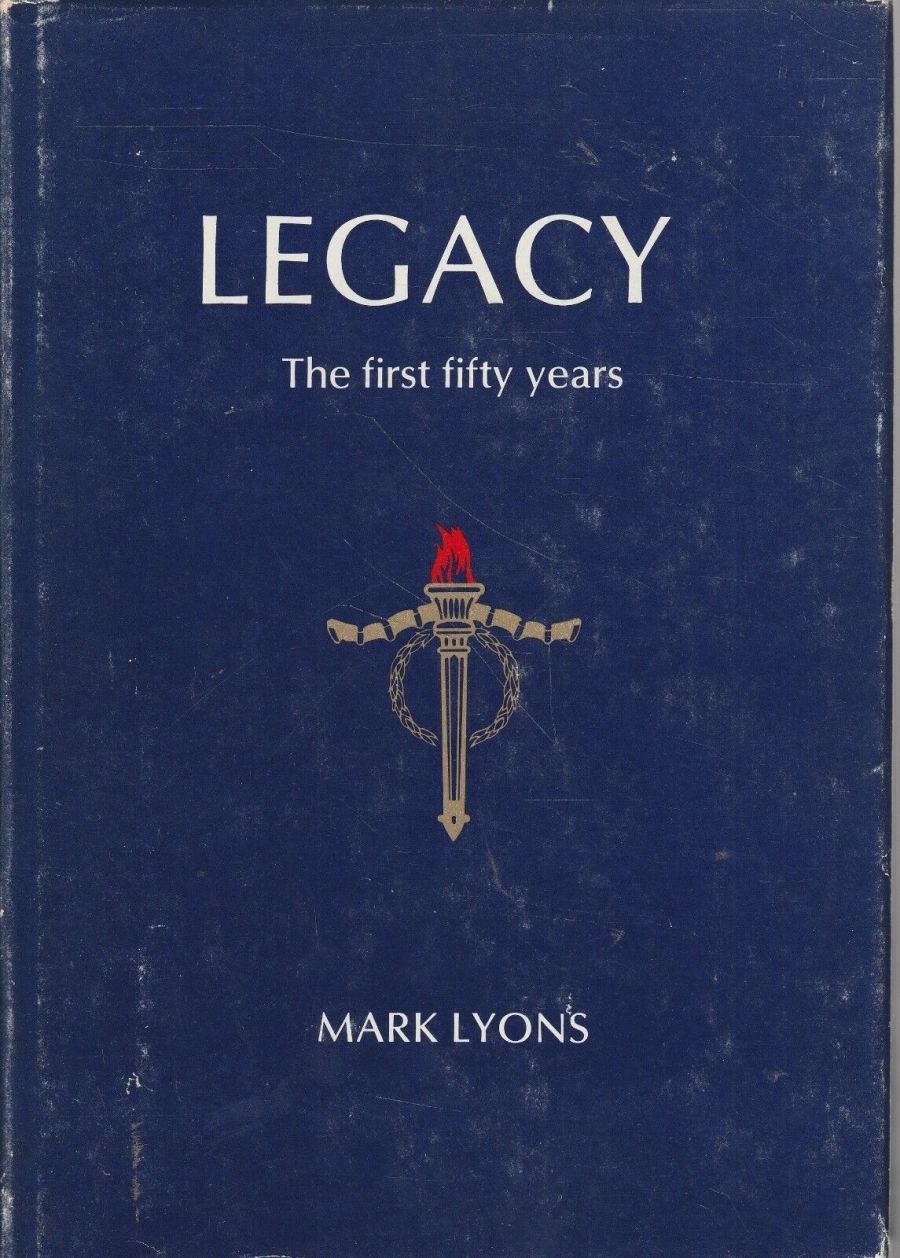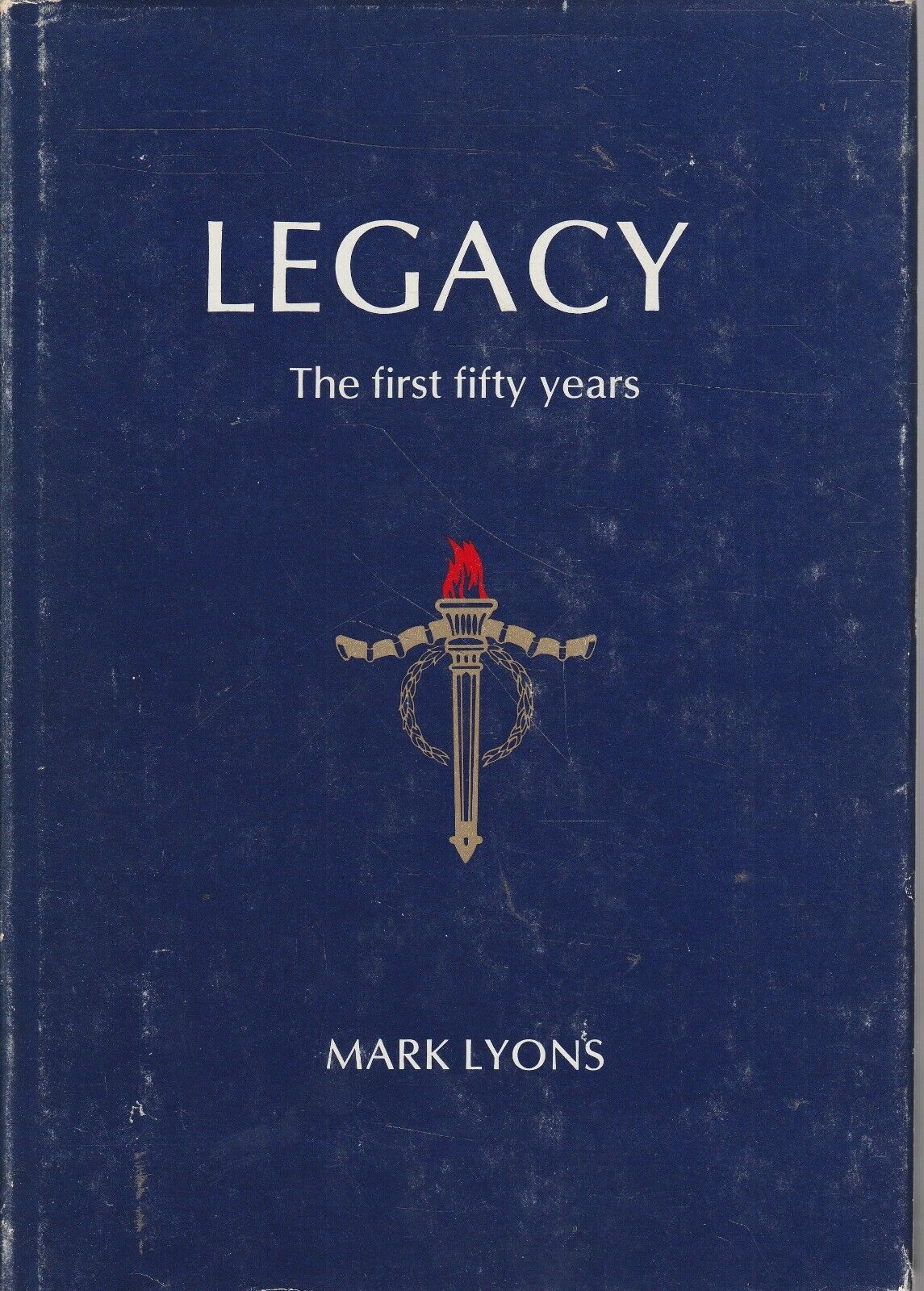
- Free Article: No
- Contents Category: Australian History
- Review Article: Yes
- Article Title: Still burning brightly
- Online Only: No
- Custom Highlight Text:
This is the jubilee history of a unique Australian institution. Legacy, initially a club of World War I veterans, aiming to help each other re-establish themselves in civilian life, quickly became an organization concerned to assist the dependents of dead or incapacitated servicemen. Though the age of legatees is rising, the number of elderly widows increasing, and the number of dependent children declining, this remains its raison d’être. Forty-seven Legacy clubs today spend nearly $3,000,000 annually on some 100,000 widows and children in addition, personal assistance – leading youth groups, acting as advisers to bereaved families – continues the paramount part of Legacy’s service.
- Book 1 Title: Legacy
- Book 1 Subtitle: The first fifty years
- Book 1 Biblio: Lothian, $12.95, 238 pp
- Book 1 Cover Small (400 x 600):

- Book 1 Cover (800 x 1200):

A commissioned history is difficult: to some extent the writer, particularly one producing his first book, is bound by the requirements of his employers. Dr Lyons seems to have felt it necessary to deal, at each stage in his account, with the actions and reactions of, at least, all major clubs and a few smaller ones. This clutters the text. On page xviii he writes that ‘to have footnoted every detail would have added to the time it took to write and to production costs’. It is arguable that a shorter book with less detailed text, but with footnotes giving examples of developments and opinions in various clubs, would have made a brisker, more readable text. Though production costs would have been higher, so might sales. Possibly production might have taken longer, but this seems unimportant as the book was not in any case available for the actual anniversary.
Dr Lyons, an historian with interests in the social sciences, is clearly a research scholar of great ability. His book is meticulous, his bibliography impressive. His careful and enterprising money conversion table will be of lasting value to future workers. He is aware of the need to maintain a balance between the history of an institution and its social setting. At all points he sets Legacy firmly in the contemporary social context – though not always with equal assurance. For instance, his section on right wing politics is very slight, while that on government policy and provision for the care of the frail elderly is perhaps inappropriately detailed. On the other hand, his section on contemporary adolescent culture is both concise and appropriate.
This reviewer feels that one problem might have been more happily solved. Dr Lyons claims that the book was written ‘first of all for legatees’. Why? Because Legacy commissioned it? Was it not also intended to reach a wider public, particularly those hundreds of thousands of women and children whom Legacy has assisted, educated, comforted over the years? They have no place in the text – ‘one inadequacy which I must acknowledge’. There was no time or space for interviews with ‘a properly selected sample of ex-junior legatees and widows’. So one might write the history of hospital, church, or school without close communication with patients, congregation or pupils.
Here we have the dry bones of a living organisation; the recipients of Legacy’s help do not appear in this book as living people; the humanity which inspired and inspires Legacy is not present. If this account represented all there was, and is, to Legacy, the torch would not still burn so brightly.


Comments powered by CComment